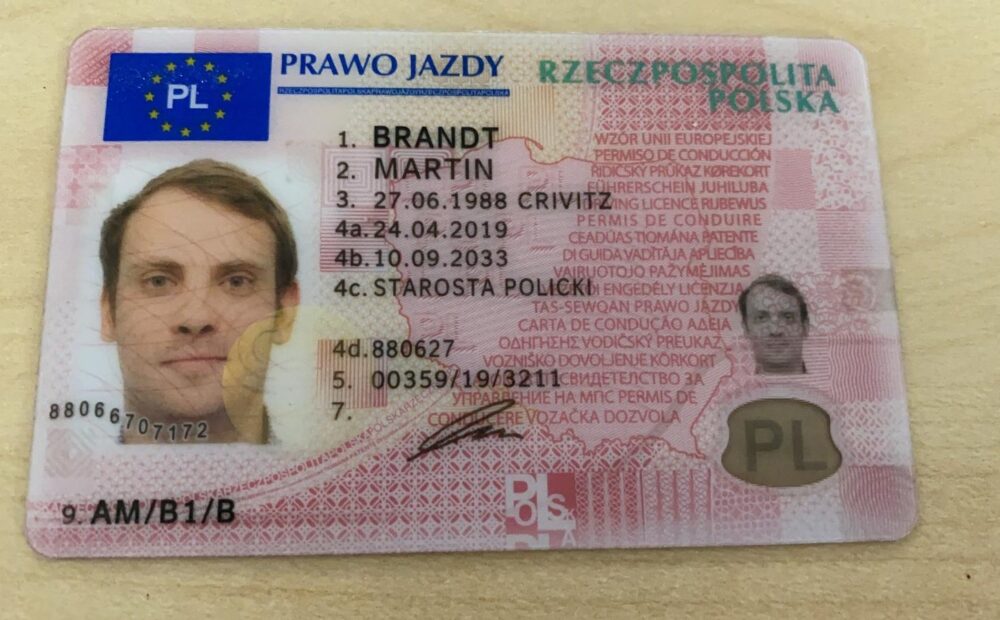Navigating the Driving License Process: A Comprehensive Guide
Acquiring a driving license is a substantial turning point in many people's lives, marking a newly found independence and the ability to browse the world on 4 wheels. Nevertheless, kupować prawo jazdy online kartaxpresspoland can be overwhelming, specifically for novice applicants. This post intends to provide an in-depth, detailed guide to the driving license procedure, guaranteeing that readers are well-prepared and educated every step of the way.
Comprehending the Driving License Categories
Before diving into the application process, it's necessary to understand the different types of driving licenses readily available. The categories can vary a little depending upon the country, however normally, they consist of:
- Learner's Permit: This is the preliminary stage for new drivers. It allows individuals to practice driving under the guidance of a licensed motorist.
- Provisionary License: Also called a probationary license, this is released to new drivers who have passed their driving test however are still subject to certain limitations.
- Complete Driver's License: This is the last, where all limitations are lifted, and the chauffeur is completely certified to operate a car individually.
Step-by-Step Guide to Obtaining a Driving License
Action 1: Meet the Eligibility Requirements
The first action in obtaining a driving license is to ensure you fulfill the eligibility criteria. These usually include:
- Age Requirement: Most nations require candidates to be at least 16 years old to apply for a student's permit and 18 years old for a full driver's license.
- Residency: You must be a resident of the state or country where you are applying for the license.
- Vision Test: You might need to pass a vision test to ensure you have adequate vision for safe driving.
Action 2: Study the Driver's Handbook
Before making an application for a learner's license, it's crucial to study the chauffeur's handbook. This handbook covers traffic laws, road indications, and safe driving practices. A lot of states supply the handbook online or at local DMV offices.
Action 3: Apply for a Learner's Permit
To use for a student's license, you will require to:
- Visit the DMV: Go to your local Department of Motor Vehicles (DMV) or their site to apply.
- Offer Documentation: Bring the required files, which normally include proof of identity, residency, and date of birth.
- Pass the Written Test: Take and pass the composed test, which examines your understanding of traffic laws and safe driving practices.
- Pay the Fee: Pay the application cost, which differs by state.
Step 4: Practice Driving
When you have your learner's authorization, it's time to start practicing. You should drive under the supervision of a licensed motorist who is at least 21 years old. It's recommended to practice in a variety of driving conditions, including daytime, nighttime, and various weather conditions.
Step 5: Schedule and Pass the Driving Test
After acquiring enough driving experience, you can schedule your driving test. The test usually includes:
- Pre-Trip Inspection: Inspect the vehicle for security issues.
- Driving Skills: Demonstrate your capability to drive securely, follow traffic laws, and perform specific maneuvers such as parallel parking and turning.
- Post-Trip Evaluation: Answer any concerns the inspector might have about your driving.
Action 6: Obtain Your Driver's License
If you pass the driving test, you will receive a provisionary license right away. You can then look for a full chauffeur's license after a specified duration, which varies by state. Some states may require additional tests or classes before providing a full license.
Frequently Asked Questions (FAQs)
Q1: How long does it take to get a motorist's license?
A: The process can take several months, depending upon how quickly you finish each action. It normally takes a few weeks to study and pass the written test, and after that several months to get enough driving experience before taking the driving test.
Q2: Can I take the written test multiple times if I fail?
A: Yes, you can retake the composed test. Nevertheless, there may be a waiting duration and a charge for each effort.
Q3: What occurs if I fail the driving test?
A: If you fail the driving test, you can retake it after a specified waiting period. It's a great concept to take additional driving lessons or practice more before retaking the test.
Q4: Can I utilize a student's license to drive alone?
A: No, a student's authorization just allows you to drive under the supervision of a licensed chauffeur who is at least 21 years of ages.
Q5: What are the limitations for a provisionary license?
A: Restrictions can vary by state but may include limitations on driving at night, limitations on the variety of guests, and requirements for a zero-tolerance policy for alcohol.
Tips for a Successful Driving License Application
- Start Early: Begin the procedure early to prevent hurrying and ensure you have enough time to prepare.
- Practice Regularly: Consistent practice is crucial to developing self-confidence and enhancing your driving abilities.
- Stay Calm: During the driving test, remain calm and focused. Take deep breaths and follow the inspector's directions.
- Review the Rules: Regularly review traffic laws and safe driving practices to remain current.
- Look For Professional Help: Consider taking driving lessons from a professional trainer to get expert assistance and feedback.
Obtaining a driving license is a significant accomplishment that opens new chances and responsibilities. By following the actions detailed in this guide and preparing completely, you can browse the procedure with confidence and end up being a safe, accountable driver. Keep in mind, the journey to getting your license is just the beginning of a long-lasting commitment to safe driving.
This detailed guide intends to provide a clear and useful introduction of the driving license procedure, ensuring that readers are well-prepared and informed every step of the way.

